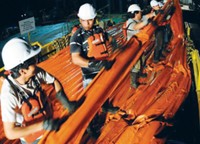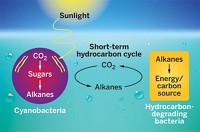Advertisement
Grab your lab coat. Let's get started
Welcome!
Welcome!
Create an account below to get 6 C&EN articles per month, receive newsletters and more - all free.
It seems this is your first time logging in online. Please enter the following information to continue.
As an ACS member you automatically get access to this site. All we need is few more details to create your reading experience.
Not you? Sign in with a different account.
Not you? Sign in with a different account.
ERROR 1
ERROR 1
ERROR 2
ERROR 2
ERROR 2
ERROR 2
ERROR 2
Password and Confirm password must match.
If you have an ACS member number, please enter it here so we can link this account to your membership. (optional)
ERROR 2
ACS values your privacy. By submitting your information, you are gaining access to C&EN and subscribing to our weekly newsletter. We use the information you provide to make your reading experience better, and we will never sell your data to third party members.
Environment
Fate Of Gulf Oil Spill Methane Reexamined
by Jyllian Kemsley
May 19, 2014
| A version of this story appeared in
Volume 92, Issue 20
Methane released into the Gulf of Mexico after the Deepwater Horizon oil rig exploded and sank in April 2010 may not have been as quickly consumed by oceangoing microbes as previously thought. Methane was the single most abundant compound by mole in the mix of oil and gas released into the Gulf. One initial study of water samples collected after the spill indicated that the methane was largely confined to a deep plume 1 km below the surface and consumed by microbes within a month after the well was capped (C&EN, Jan. 10, 2011, page 31). In the new work, analysis of a different set of samples suggests instead that the colony of methane-consuming microbes that bloomed after the spill consumed perhaps half of the methane, then crashed as the gas dispersed throughout the water (Nat. Geosci. 2014, DOI: 10.1038/ngeo2156). Researchers led by Samantha B. Joye of the University of Georgia continued to detect elevated methane levels north of the wellhead for several additional weeks. What caused the microbial crash is unclear. Possibilities include a lack of nutrients, such as iron, or methane concentrations dropping to a level that could not sustain the microbe population.





Join the conversation
Contact the reporter
Submit a Letter to the Editor for publication
Engage with us on Twitter